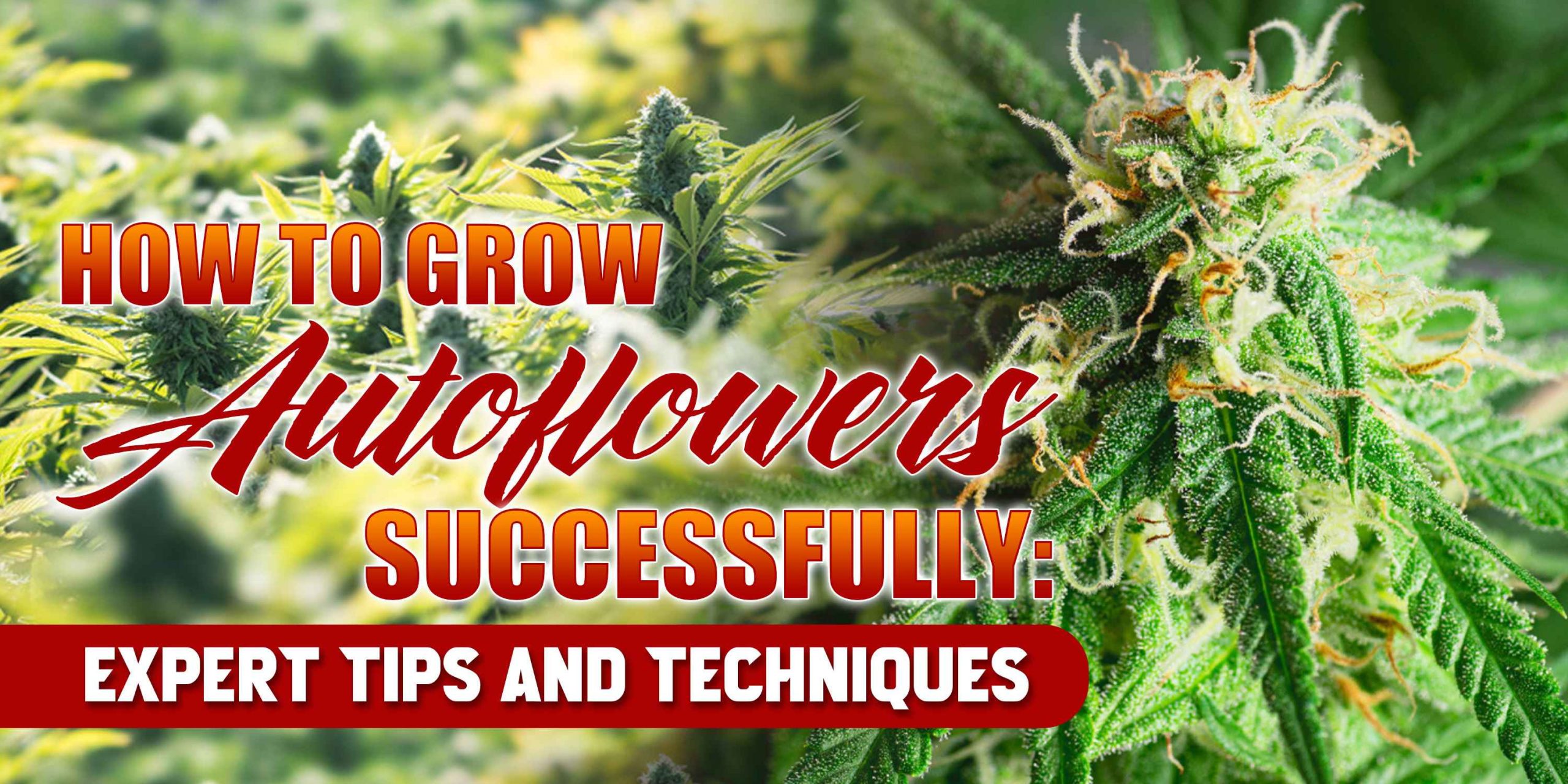



Table of Contents
ToggleAutoflowering cannabis plants have revolutionized the cultivation landscape with their unique characteristics. Unlike photoperiod plants, which require specific light cycles to trigger flowering, autoflowers transition from vegetative growth to flowering automatically based on their age. This trait makes them ideal for growers looking for a quicker harvest, multiple harvests per year, and simplified cultivation, especially for beginners or those with limited space.
To truly master the art of growing autoflowers, it’s essential to understand their biology and growth patterns. Autoflowers are the result of crossbreeding cannabis ruderalis with indica or sativa strains, inheriting the ruderalis’ autoflowering trait. In growing autoflowers, this genetic composition plays a significant role in determining their size, flowering time, and overall resilience to environmental stressors.
When selecting an autoflower strain, consider factors beyond just THC and CBD levels. Look for strains with desirable growth characteristics such as compact size for discreet cultivation, resilience to pests and diseases, and tolerance to fluctuations in environmental conditions. Understanding the specific traits of each strain can help you tailor your growing approach for optimal results.
Choosing the right autoflower strain is a critical first step in your cultivation journey. With a vast array of strains available, each with its unique attributes, it’s important to assess your goals and growing environment before making a selection. Here are some key factors to consider:
By carefully weighing these factors and researching reputable seed banks or breeders, you can make an informed decision that sets the foundation for successful growth.
Creating the perfect environment for your autoflowers is crucial to their health, growth, and overall productivity. Whether you’re growing indoors or outdoors, here are key autoflower grow tips and considerations for optimizing growing conditions:
By meticulously managing these factors and addressing any environmental challenges promptly, you can create an optimal growing environment that supports robust plant growth and high-quality yields.
In conclusion, growing autoflowers successfully requires a combination of knowledge, attention to detail, autoflower tips, and tricks. By following the tips and techniques outlined in this guide, you can maximize your yields and enjoy high-quality cannabis harvests. Happy growing!
FAQ 1: Can autoflowers be grown outdoors in cold climates?
Answer: Yes, autoflowers can thrive in cold climates if certain precautions are taken. Choose autoflower strains known for their resilience to cooler temperatures, provide adequate protection from frost using row covers or greenhouses, and consider using supplemental lighting during shorter daylight hours.
FAQ 2: Do autoflowers require different nutrients than photoperiod plants?
Answer: Autoflowers benefit from nutrient formulations tailored to their rapid growth and flowering cycles. Look for balanced NPK ratios with slightly higher phosphorus and potassium levels during flowering. Avoid heavy nitrogen-based fertilizers during flowering to prevent nutrient imbalances.
FAQ 3: How long do autoflowers take from seed to harvest?
Answer: Autoflowers typically have a shorter grow cycle compared to photoperiod plants, ranging from 8 to 12 weeks from seed to harvest. However, specific growth times vary depending on the autoflower strain, environmental conditions, and cultivation techniques used.
FAQ 4: Can I use training techniques like topping or super cropping on autoflowers?
Answer: While training techniques can be applied to autoflowers, caution is advised due to their rapid growth and limited vegetative phase. Low-stress training (LST) is generally recommended for gently shaping plants and improving light penetration. Avoid aggressive techniques like topping or super cropping that can stress autoflowers and delay flowering.
FAQ 5: How often should autoflowers be watered?
Answer: Autoflower watering frequency depends on various factors such as growing medium, container size, environmental conditions, and plant growth stage. Monitor soil moisture levels regularly and water when the top inch of soil feels dry to the touch. Avoid overwatering, which can lead to root issues, and adjust watering frequency based on plant needs.



Best Selling
Feminized Seeds
Regular Seeds
Customer Help
Contact Us
WE SELL MARIJUANA SEEDS IN THE USA

Are You 18 Or Over?
YesOr
No By clicking yes, you certify that you are over 18. By using this website, you agree to our legal disclaimer.